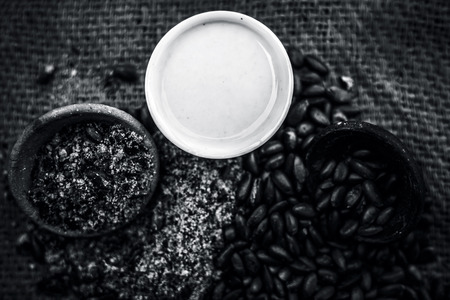1. Understanding Terroir in Coffee
The term “terroir” is widely recognised among wine enthusiasts across the UK, but its influence extends far beyond vineyards—reaching deep into the world of speciality coffee. Terroir, a French word meaning “sense of place,” encapsulates the unique interplay of environmental factors such as soil composition, altitude, climate, and local farming practices that shape the character of agricultural products. In coffee, much like in wine, terroir is instrumental in defining flavour profiles, aromas, and overall cup quality. By understanding terroir, British coffee drinkers can appreciate why a washed Ethiopian Yirgacheffe bursts with floral and citrus notes while a natural-processed Brazilian offers chocolatey depth. As consumers increasingly seek out coffees suited to the changing seasons—from bright, lively cups in spring to comforting, full-bodied brews in winter—recognising the role of origin becomes essential. For UK drinkers who value both provenance and taste, exploring terroir provides a new dimension to seasonal coffee selection and enjoyment.
2. The Diversity of Origin: Key Producing Regions and Their Characteristics
For UK coffee enthusiasts, the notion of origin extends well beyond a simple label—it’s a dynamic expression of terroir, where climate, soil composition, and altitude converge to sculpt a coffee’s distinctive character. This diversity is particularly relevant as British drinkers increasingly seek out single-origin coffees that resonate with their seasonal preferences, whether it be a bright, floral cup for spring or a rich, chocolatey brew for winter.
Understanding Terroir: Climate, Soil & Altitude
The interplay between environment and cultivation methods produces remarkable diversity across coffee-producing regions. For example, high-altitude farms in Ethiopia benefit from cooler temperatures, slowing cherry maturation and resulting in complex acidity. Meanwhile, volcanic soils in Colombia lend depth and sweetness, matching the UK palate’s fondness for balanced yet vibrant profiles during autumn months.
Key Origins and Their Distinctive Profiles
| Region | Climate | Soil Type | Altitude Range (m) | Flavour Profile | UK Seasonal Preference |
|---|---|---|---|---|---|
| Ethiopia (Yirgacheffe) | Tropical Highlands | Rich Volcanic | 1,700–2,200 | Bergamot, Jasmine, Citrus Acidity | Spring/Summer – Light & Floral |
| Colombia (Huila) | Mild, Rainy | Volcanic Loam | 1,200–2,000 | Cocoa, Red Fruits, Balanced Acidity | Autumn – Comforting Sweetness |
| Kenya (Nyeri) | Tropical Savanna | Red Clay Loam | 1,500–2,100 | Blackcurrant, Tomato, Bright Acidity | Summer – Vibrant & Refreshing |
| Brazil (Minas Gerais) | Tropical Warm Wet/Dry Seasons | Sandy Clay Loam | 800–1,300 | Nuts, Chocolate, Low Acidity | Winter – Rich & Smooth Body |
| Guatemala (Antigua) | Mild Temperate | Pumice-rich Volcanic Ash | 1,400–1,700 | Cocoa Nibs, Spice, Clean Finish | Autumn/Winter – Hearty & Spiced Notes |
Sourcing with the British Palate in Mind
The British market has demonstrated a nuanced appreciation for these differences. Cafés across London and beyond curate their menus to highlight origins that align with the shifting seasons—Ethiopian or Kenyan offerings in warmer months for their lively acidity and florals; Colombian or Guatemalan beans as the days grow shorter for richer body and comforting notes. Understanding terroir not only enhances transparency but also empowers UK consumers to make informed choices that elevate their daily brew into an experience shaped by both geography and seasonality.

3. Seasonal Sensibilities: How UK Tastes Shift Through the Year
The United Kingdom’s relationship with coffee is anything but static; it’s profoundly influenced by the nation’s distinct seasons and accompanying cultural nuances. As British weather transitions from crisp winters to fleeting summers, so too do the flavour profiles that coffee drinkers crave. In the colder months, there is a marked preference for coffees boasting deeper, richer notes—think chocolatey Guatemalans or spicy Sumatran beans. These origins offer comfort and warmth, aligning with the UK’s winter rituals of cosiness and indulgence. Come spring and summer, however, palates begin to favour lighter-bodied coffees with vibrant acidity and fruity undertones. Washed Ethiopians or floral Kenyans gain popularity, as their lively character suits lighter fare and al fresco gatherings typical of British summertime.
This seasonal shift is not merely about temperature; it mirrors broader trends in local cuisine and social habits. During autumn, for instance, when hearty puddings and root vegetables return to the menu, nutty Brazilians or caramel-toned Colombians become natural pairings. The provenance of each bean takes on new meaning: UK consumers increasingly seek transparency about origin, looking for terroir-driven stories that connect their cup to a specific landscape and climate. Ultimately, these evolving preferences reveal a sophisticated appreciation for how terroir shapes both flavour and the ritualistic experience of coffee throughout the British year.
4. Local Roasters Respond: Sourcing and Highlighting Terroir
Within the UK’s thriving specialty coffee scene, local roasters play a pivotal role in translating terroir into the cup, especially as consumer preferences shift with the seasons. These roasters are not merely purveyors of beans; they are curators of origin stories and champions of traceability. Their sourcing strategies are dynamic, designed to ensure that each seasonal offering resonates with both the British palate and the distinct qualities imparted by a coffee’s environment of growth.
Sourcing Strategies Aligned with Seasonality
UK-based specialty roasters meticulously monitor global harvest calendars to align their offerings with peak freshness. For example, Central American coffees—harvested in early spring—often headline spring and summer menus, celebrated for their bright acidity and floral notes. By autumn, East African coffees, known for their juicy fruit profiles, become prevalent as they reach UK shores at optimal maturity. This synchronisation is not only about flavour but also about sustainability, as it minimises storage times and supports direct-trade relationships.
Table 1: Seasonal Sourcing by Origin
| Season | Origin Focus | Terroir Highlights |
|---|---|---|
| Spring | Central America (Guatemala, Honduras) | Crisp acidity, floral aromas |
| Summer | South America (Colombia, Peru) | Sugarcane sweetness, balanced body |
| Autumn | East Africa (Ethiopia, Kenya) | Berries, citrus, complex florals |
| Winter | Southeast Asia (Sumatra), Brazil | Earthy depth, chocolatey richness |
Highlighting Terroir Through Curation and Communication
The narrative around each coffee is as carefully crafted as the roast profile itself. Roasters often host public cuppings or release detailed tasting notes that spotlight how altitude, soil composition, and microclimate influence cup characteristics. In the UK market—where transparency and ethical sourcing are highly valued—this approach deepens consumer engagement and builds trust.
Example: British Roaster Practices
- Origin-First Labelling: Bags prominently feature farm or cooperative names alongside region and elevation details.
- Seasonal Rotations: Subscription services adjust selections monthly to coincide with arrival of fresh crop coffees.
- Bespoke Roasting Profiles: Roast development is tailored to accentuate hallmark terroir notes—whether that means preserving delicate florals from Ethiopian Yirgacheffe or drawing out syrupy body from Brazilian Cerrado lots.
This terroir-centric approach empowers UK coffee drinkers to make informed seasonal choices while celebrating the diversity and provenance of every cup.
5. Educating the UK Coffee Drinker
In the context of the UK’s rapidly maturing coffee culture, education plays a pivotal role in bridging the gap between terroir-driven origin stories and consumer appreciation. The collective efforts of cafes, retailers, and coffee educators are instrumental in transforming how British coffee drinkers perceive and select their brews, especially as seasonal preferences come into play.
The Role of Cafes: More Than Just a Brew
Independent cafes and specialty coffee shops across the UK have become hubs for coffee knowledge and experience. Baristas often act as frontline educators, sharing information about a coffee’s origin, processing method, and flavour profile with curious customers. Many leading establishments host ‘origin weeks’ or cupping sessions, encouraging guests to taste single origins side by side and discover firsthand how terroir influences flavour—whether it’s an Ethiopian natural bursting with summer berry notes or a Guatemalan washed offering crisp autumn apple acidity. These experiences foster a deeper connection between the drinker and the journey of their cup.
Retailers: Bringing Terroir Home
Specialist retailers—both brick-and-mortar shops and online platforms—have also embraced their responsibility to inform. Detailed labels, tasting notes, and origin stories featured on packaging provide consumers with valuable insights at the point of purchase. In-store staff are trained to answer questions about provenance, helping shoppers choose coffees that match not just their palate but also the season—perhaps opting for a light Kenyan during spring or a rich Sumatran for winter warmth. This transparent approach empowers customers to make informed decisions based on origin and its impact on flavour.
Coffee Educators: Deepening Understanding
The rise of coffee education in the UK is evident through workshops, courses, and public events led by industry professionals. These initiatives go beyond surface-level marketing; they delve into soil composition, altitude, climate patterns, and traditional farming practices that define terroir. By demystifying complex concepts and linking them to sensory experiences, educators help UK consumers appreciate why a Colombian harvest might shine in autumn or why an East African crop feels refreshing in summer. Such knowledge elevates seasonal choice from trend-driven novelty to thoughtful selection rooted in understanding.
Together, cafes, retailers, and educators are not only shaping preferences but also cultivating an appreciation for diversity in origin—a movement that resonates strongly with discerning UK coffee drinkers eager to align their choices with both seasonality and story.
6. Looking Forward: The Future of Origin-Led Choices in the UK
As the appreciation for terroir and coffee origin continues to grow among UK consumers, several emerging trends are poised to shape the future landscape of coffee culture. Increasing transparency in sourcing is becoming a priority; British coffee drinkers now expect roasters and cafés to provide detailed information about farm locations, altitude, processing methods, and even farmer profiles. This demand for traceability not only supports ethical consumption but also deepens the connection between cup and grower.
The rise of micro-lot and single-farm coffees is another trend gaining traction. Discerning UK consumers are keen to explore nuanced flavour profiles that reflect specific regions or even individual plots within an estate. Roasters are responding by showcasing limited seasonal releases, celebrating the diversity of terroirs from Ethiopia’s highlands to Colombia’s volcanic slopes. These offerings encourage experimentation, with drinkers seeking out new taste experiences aligned with changing seasons.
Furthermore, sustainability is increasingly at the forefront of origin-led choices. UK drinkers are showing a growing preference for coffees produced using environmentally responsible practices and fair labour standards. Certifications such as Rainforest Alliance or direct trade relationships are now important considerations when selecting beans, reinforcing the idea that provenance encompasses both flavour and ethics.
Technology also plays a crucial role in facilitating origin-focused engagement. Digital platforms allow roasters to share stories from producers through videos, virtual farm tours, and interactive tasting notes. This connectivity enables British consumers to make informed seasonal selections based on real-time harvest updates and firsthand narratives from origin countries.
Looking ahead, we can expect terroir-driven education to become more mainstream. Coffee workshops, tasting flights centred on regional comparisons, and collaborations with renowned growers will likely become staples in the UK’s specialty scene. As palates become more refined, origin will not only guide seasonal preferences but also foster a richer appreciation for the complex journey from bean to brew.


